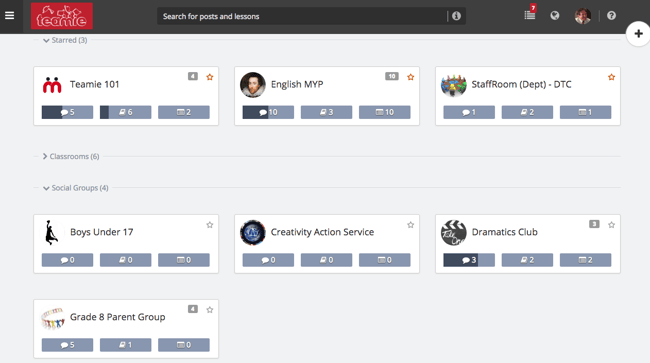Are you thinking about taking the leap to implement a new LMS? That's good. The LMS promises to solve many of your issues, and it's a good idea to have a solution in place. But, does just buying the LMS solve the issues and bring the promised benefits?
Technology, often and rightly so, comes with the promise of efficiency and improved efficacy. You start with a vision of the promised land where everything is smooth, easy and painless and after much research, you find the technology that can help you get to the promised land. Buy the technology and the work is done; life is good. Or is it?
Apart from the actual technical implementation of the solution, a successful implementation involves devising a rollout plan, changing processes and policies to leverage the new technology effectively, and most importantly, get buy-in and motivate the people to use the technology to actually realize the benefits.
Implementing a Learning Management System (LMS), such as Teamie, comes with several benefits - improved productivity, enhanced communication, rich feedback, anytime access to resources, better transparency of information and a leap in the learning experience for all stakeholders. Like any technology solution, implementing an LMS requires
Let's take a look at some of the key considerations and best practices while implementing an LMS.
1. Understand and Manage Change
Whether you are replacing an existing LMS or implementing LMS for the first time, in order to enjoy the benefits of the LMS, there will be
In order to do that, you need to do the following:
- Articulate and Communicate why do you need a new LMS?
- Create a Cross-functional LMS implementation team that is empowered to change processes and policies needed to effectively use the new LMS
- Ensure IT readiness is in place
Once you have articulated the reasons for the
2. Strategies for a Successful Rollout
One of the key indicators for a successful LMS implementation is Adoption. Adoption of the LMS from teachers and students is the first step in recognizing and realizing the benefits. Ensuring adoption requires building awareness of the need for change and the benefits that the LMS brings. To get sustained adoption, you need teachers to realize for themselves the benefits (time saved, ease of use, better lessons, improved outcomes, etc.) and spread the word in their departments and become evangelists of the new teaching practices enabled by the LMS adoption.
Here are a few strategies to keep in mind:
- Start with a Pilot - A pilot can help with getting buy-in from the teachers who would be able to vouch for the benefits. Another key benefit of the pilot is that during full rollout, the teachers involved in the pilot can help other teachers with the rollout, either with training or setting the context and scenarios in which the LMS has been helpful in their teaching practice.
- Have a Training Plan that covers how to use the LMS but also when to use the LMS - Context training is as critical as Tool training. Since the LMS may bring about changes in teaching practice, it is important to help teachers with use cases and examples of the context in which the LMS can be used.
- Set Minimum Usage Expectations, phased over time - This is a critical policy that needs to be implemented to ensure that there
is seriousness andrigour around the LMS implementation. While buy-in needs to come from teachers, it is also important for the leadership team and the LMS implementation team to put in place minimum usage expectations from the teaching staff. - Identify Quick Wins & let them know it's okay to Fail - It is important for teachers and students to see the benefits quickly so that they can build their confidence with the LMS, and are willing to try new workflows and features of the platform. To make this happen, your minimum expectations should include workflows that will either remove pain caused by the existing workflow for
teachers, or create an experience that was not previously possible without the LMS.
3. Sustain and Innovate
With these strategies in place, you will be off to a good start with the LMS implementation. However, a start is not enough. We need to sustain adoption to continue to get the benefits of the LMS. We need to make the LMS part of the teaching practice and continue to integrate it with other teaching and learning experiences. In order to do that, it is advisable to:
- Identify Internal Champions - As you progress with the rollout, it is important to identify teachers who are incorporating the LMS as part of their teaching practice and realizing the benefits of an improved and differentiated learning experience.
- Measure & Reward Success - The LMS Implementation team should monitor the dashboard on the LMS that provides data on adoption and usage.
- Integrate the LMS beyond teaching and learning - The LMS ought to become a hub of activity for the school, with teachers and students spending a considerable time on the platform. Hence, using the LMS to integrate with other services or extend beyond the traditional use cases should be considered. Using the LMS as a Professional Development site for teachers, or for Social groups for extra-curricular activities are some ideas used by customers.

Implementing an LMS is easy, but successfully rolling out an LMS that can drive change in teaching and learning practice requires a team effort and a conscious strategy.
Want to learn more about such best practices?
Download this white paper that includes 24 Best Practices for implementing an LMS.



Leave a Reply